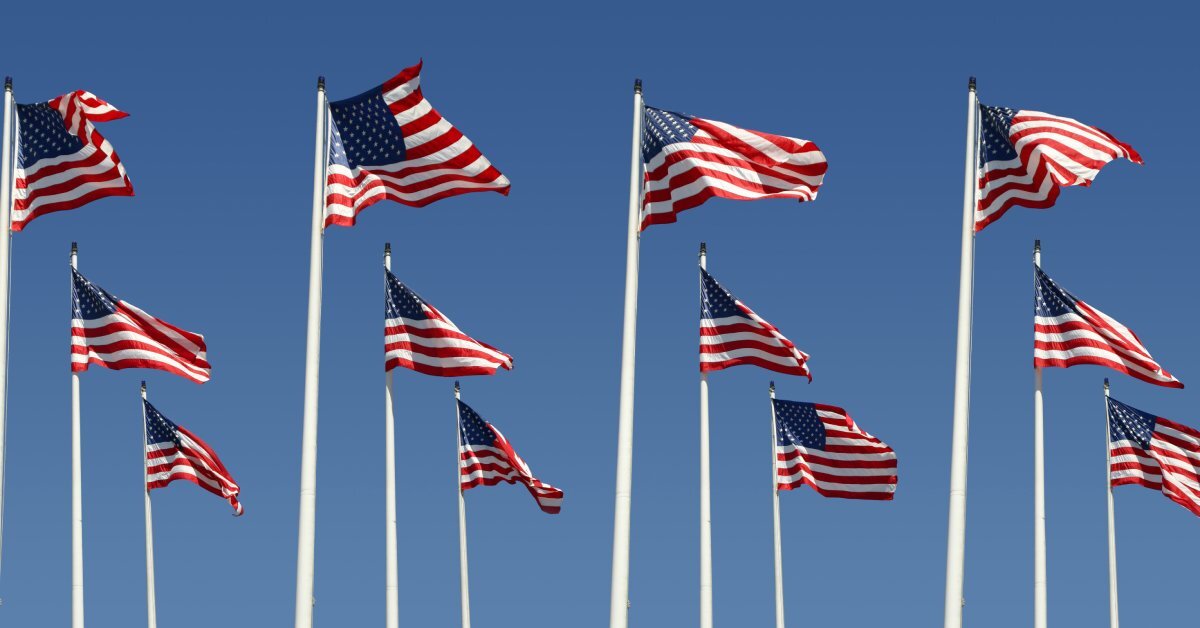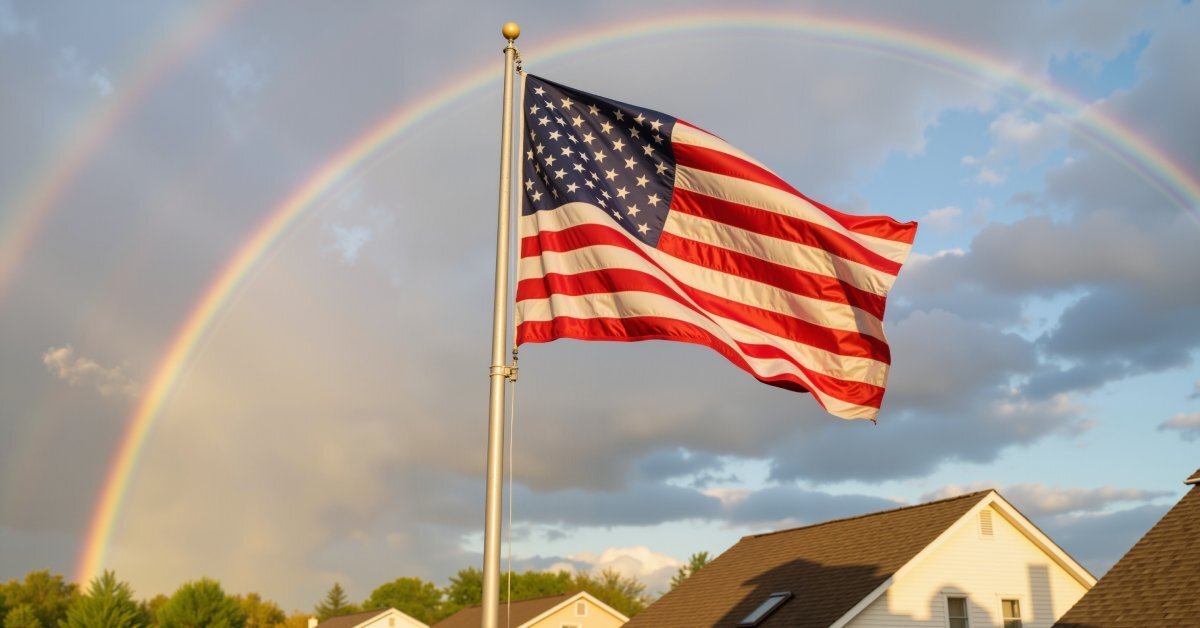How To Properly Arrange and Display Multiple Flags
Sep 5th 2025
Flags make a striking statement when displayed together, whether for ceremonies, events, or as a showcase of national pride and organization. Properly arranging and displaying multiple flags reflects respect for their symbolism and meaning. To do this effectively, you need to follow certain etiquette guidelines and practical steps to maintain professionalism and alignment with traditional decorum. With the right understanding, you can properly arrange and display multiple flags while still showing proper respect!
Start With the Most Important Flag
The first and foremost step is deciding which flag holds the highest prominence. The first flag is typically the national flag, as it represents the identity and unity of an entire nation. Position it in the place of honor, which is often at the center of the display or at the highest point if multiple flags are at varying heights.
Use Proper Flagpoles or Supports
The flagpoles or supports you choose should reflect the dignity and importance of the flags being displayed. High-quality, stable poles ensure a professional appearance while also preventing accidents such as tipping from sagging displays. Clean poles enhance the overall presentation, projecting a sense of pride and formality.
Honor the Order of Precedence
When arranging flags from different entities, always follow the established order of precedence to show respect to all represented parties. For instance, a nation’s flag generally takes precedence over state, local, or organizational flags unless specific circumstances dictate otherwise, such as a local event highlighting a particular region. If you are unsure about the correct order for a specific situation, consult official flag display guidelines to avoid unintentional disrespect.

Display Flags at Equal Heights When Side by Side
If you are displaying multiple flags side by side, ensure they are positioned at equal heights on separate poles. This practice symbolizes equality and respect among the flags. Uneven heights can imply hierarchy or favoritism, which you should avoid, unless you’ve done it deliberately for a specific reason, such as honoring a visiting delegation.
Position Flags in the Correct Sequence
Proper sequencing of flags when displayed together is essential to avoid confusion or disrespect. Arrange the flags from left to right (from the audience’s perspective) based on their rank or precedence. For example, when displaying a national flag alongside state and organizational flags, the national flag is furthest to the left, followed by the state flag, and then the organizational flag. Adhering to this sequence ensures clarity and respect.
Maintain Cleanliness and Condition
Flags are symbols of pride and identity, so it’s crucial to ensure they are clean, untattered, and free of damage. A faded or frayed flag can detract from the display’s meaning and visual appeal, giving the impression of neglect. Regularly inspect your flags, especially if they are outdoors, where exposure to the elements can wear them down. Replace or repair worn flags promptly to maintain dignity.
Avoid Overcrowding
When displaying multiple flags, allow sufficient space between them so that each flag can flow freely without tangling or obstructing others. Overcrowding a display not only reduces its visual impact but also undermines the respect given to each flag. Ensure there is enough room for the flags to move naturally, whether indoors or outdoors, so they remain distinct and visually impactful.
Follow Lighting Standards
If your flags remain displayed after sunset, it’s essential to ensure they are properly illuminated. Lighting serves multiple purposes: it draws attention to the flags, keeps them visible for viewers, and honors their significance by showing you care for them, even after dark. Use focused lights, such as spotlights or floodlights, that highlight the flags without casting harsh shadows and ensure the lighting arrangement is both functional and aesthetically pleasing.
Respect Individual Flag Protocols
Each flag carries its own symbolism and often comes with unique protocols regarding how you should display, fold, handle, and treat the flag. For example, national flags usually have strict guidelines, such as not allowing them to touch the ground, avoiding their use as decoration, or ensuring they are never draped over objects or furniture. Overlooking or being unaware of these rules can lead to unintentional displays of disrespect, which can undermine the display’s message.
Prioritize Accessibility
Flags should always be easily visible and legible to your audience. Avoid placing them in areas where obstacles like walls, furniture, or poor angles obstruct the view, as this diminishes their impact and significance. For indoor displays, ensure flags are at an appropriate height and angle so everyone can view them comfortably without straining. For outdoor displays, choose an open area where flags are visible from multiple vantage points, and consider factors like foot traffic and sightlines.
Don’t Allow Flags To Touch the Ground
A flag touching the ground is universally considered a sign of disrespect, making it crucial to keep all flags elevated and off the ground at all times. Use reliable fixtures and secure fastenings to prevent flags from drooping, slipping, or being blown down by the wind. Regularly inspect poles, stands, and supports to ensure they are in good working order, and make any necessary adjustments or repairs promptly.

Secure Flags Appropriately Outdoors
Outdoor flag displays are often subjected to challenging weather conditions such as wind, rain, or harsh sunlight. To ensure the flags remain secure, presentable, and undamaged, use durable materials and high-quality construction for both the flags and their fixtures. Attach flags firmly to their poles with weather-resistant fasteners, such as clips or grommets, and regularly check for signs of wear and tear, such as:
- Frayed edges
- Faded colors
- Tears
It’s also a good idea to use poles and stands that can withstand outdoor conditions, ensuring safety and stability even during strong winds.
Temporarily Lower Flags for Ceremonies
For solemn occasions such as memorials, moments of silence, or national days of mourning, lowering the flag of highest prominence to half-staff is a traditional practice that conveys respect and solidarity. This act honors those being remembered or celebrated and adds a layer of dignity and meaning to the occasion. It’s important to follow proper protocols for lowering and raising the flag during these moments, as improper handling can unintentionally diminish the gesture’s significance.
Remove or Replace Faded Flags
Flags that are faded, torn, or otherwise worn out need to be retired respectfully and replaced with new ones. A flag’s condition reflects the care and respect it receives, so keeping your display fresh and well-maintained is essential. Replacing old flags with new ones ensures your display remains a source of pride and respect, leaving a positive impression on all who see it.
Properly arranging and displaying multiple flags involves more than simply setting up poles and fabric; it's about creating a meaningful and respectful showcase that honors each flag. By following these tips and flying your flags with the right indoor flagpole sets from us at Independence Bunting & Flag, you can put together a display that is visually impactful, well-organized, and full of significance.








